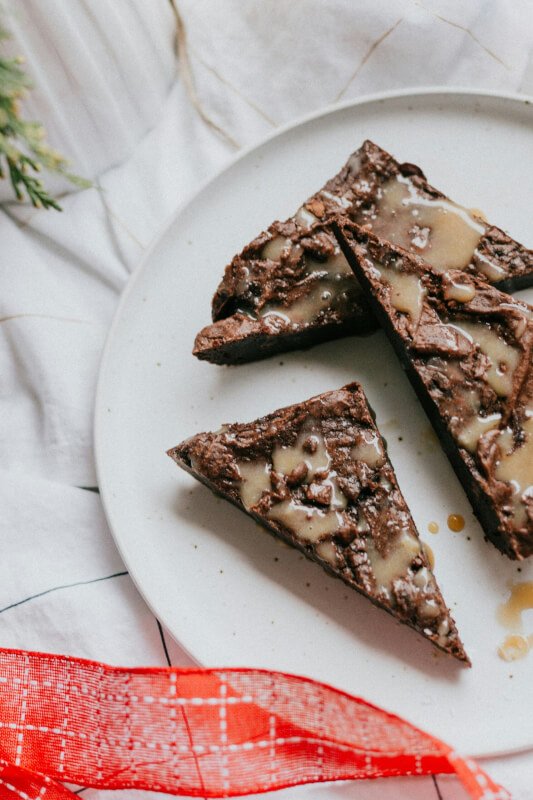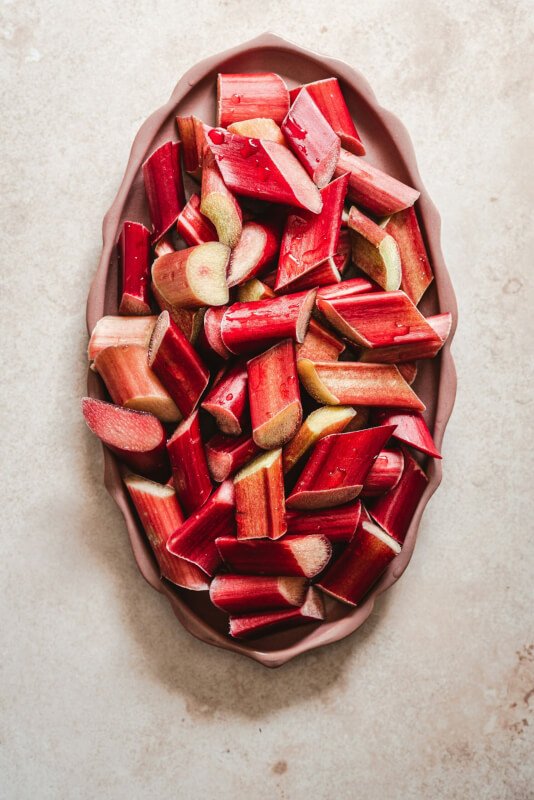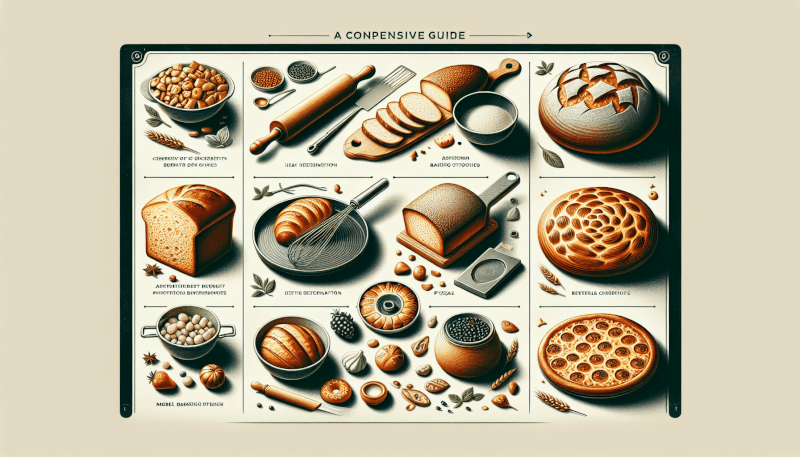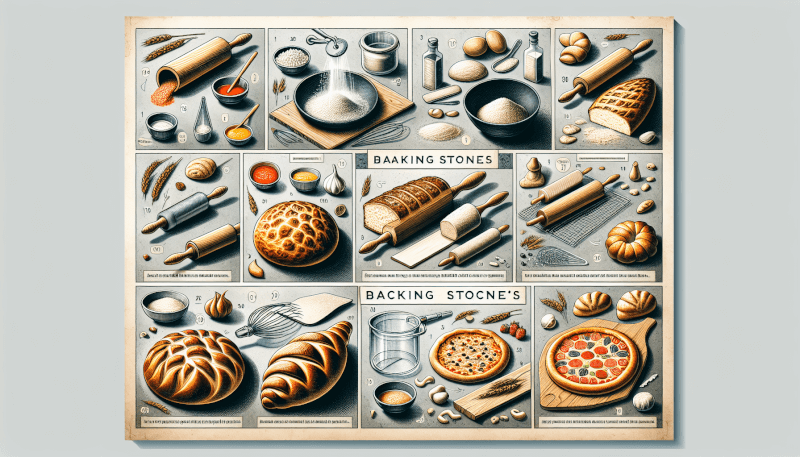Are you an avid baker looking to up your game in the kitchen? Look no further! This ultimate guide is here to help you navigate the world of baking stones and unlock the secret to perfectly golden crusts and evenly cooked goodies. From the classic pizza stone to the versatile cordierite and even the modern ceramic options, we will cover it all. Whether you’re a beginner or a seasoned pro, this guide is packed with tips, tricks, and recommendations to take your baking skills to the next level. So, grab your apron and let’s dive into the wonderful world of baking stones together!

The Basics of Baking Stones
What are baking stones?
Baking stones, also known as pizza stones, are thick, heavy slabs made from various materials such as ceramic, cordierite, soapstone, granite, cast iron, and steel. These stones are used as a surface for baking bread, pizza, and other baked goods.
Why use baking stones?
Using a baking stone can significantly improve the quality of your baked goods. These stones distribute heat evenly, helping to achieve a crispier crust and better texture. They also absorb moisture, leading to a more evenly baked product. Baking stones are particularly useful for pizzas, producing a restaurant-quality crust that is slightly charred and perfectly crispy.
Types of baking stones
There are various types of baking stones available, each with its unique properties. Some popular options include ceramic, cordierite, soapstone, granite, cast iron, and steel baking stones. Each material has its advantages and ideal applications, and choosing the right one depends on personal preferences and specific baking needs.
Choosing the Right Baking Stone
Considerations before buying
Before purchasing a baking stone, there are a few factors to consider. Firstly, think about the size and thickness of the stone, ensuring it fits well in your oven. Additionally, consider the material and its heat retention capabilities, as well as its durability and maintenance requirements.
Popular types of baking stones
Among the popular types of baking stones are ceramic, cordierite, soapstone, granite, cast iron, and steel stones. Each material has its unique properties, benefits, and potential limitations. Researching and understanding these differences can help you make an informed decision when selecting a baking stone.
Size and thickness
When choosing a baking stone, it’s essential to consider the size and thickness that will fit well in your oven and meet your baking needs. Thicker stones generally retain heat better and provide a more even distribution, while larger stones allow for baking multiple items simultaneously. Consider the dimensions of your oven and the size of your typical baking sheets or pans to determine the ideal size and thickness of your baking stone.
Using a Pizza Stone
Preparing the stone
Before using a pizza stone, it is important to properly prepare it. Start by placing the stone on the lowest rack of your cold oven and then preheat the oven to the desired baking temperature, typically around 500°F (260°C). This gradually allows the stone to heat up and prevents thermal shock, which could cause cracking.
Using the stone for pizzas
To use a pizza stone, carefully transfer your pizza to a pizza peel or a wooden cutting board lightly dusted with flour or cornmeal. Slide the pizza onto the hot stone in the preheated oven using a gentle back-and-forth motion. Allow the pizza to bake on the stone until the crust is golden brown and the cheese is bubbling and slightly browned.
Tips and tricks for perfect pizza crusts
To achieve the perfect pizza crust, there are a few tips and tricks to consider. Preheating the stone adequately is crucial for a crispy crust. Dusting the pizza peel or wooden cutting board with flour or cornmeal helps prevent sticking when transferring the pizza onto the stone. It is also essential to avoid overloading the pizza with toppings, as this can lead to a soggy crust. Experimenting with different dough recipes and baking times can help you find your desired crust texture.
Using a Ceramic Baking Stone
Seasoning the stone
Before using a ceramic baking stone for the first time, it is recommended to season it. To do this, apply a thin layer of vegetable oil to the surface of the stone and allow it to absorb for several hours or overnight. Repeat this process a few times to create a natural non-stick coating.
Best practices for using ceramic stones
When using a ceramic baking stone, preheat it along with the oven, allowing it to reach the desired temperature gradually. Avoid sudden temperature changes, such as exposing the hot stone to cold water, as this can cause cracking. Additionally, use a pizza peel or a wooden cutting board to transfer your baked goods onto the hot stone.
Cleaning and maintenance
Cleaning a ceramic baking stone is relatively simple. Allow it to cool completely before cleaning, then gently scrape off any hardened food particles using a spatula or a brush. Avoid using soap or harsh chemicals, as these can penetrate the stone and affect the flavor of future bakes. If necessary, lightly scrub the stone with warm water and a soft cloth or sponge. It is normal for the stone to darken over time, and this does not affect its performance.

Using a Cordierite Baking Stone
Benefits of cordierite stones
Cordierite baking stones are known for their exceptional heat retention properties. They can withstand high temperatures without cracking and distribute heat evenly, resulting in evenly baked goods with a crispy crust. Cordierite stones are also highly durable, making them an excellent long-term investment for avid bakers.
Preheating and using the stone
When using a cordierite baking stone, preheat it along with the oven. This allows the stone to evenly distribute heat, leading to consistent and desirable results. To use the stone, place your baked goods directly on its surface or use a pizza peel or wooden cutting board for easy transfer. Follow the recipe’s instructions for baking times and temperatures.
Enhancing baking results
To enhance your baking results with a cordierite stone, ensure that the stone is preheated adequately before placing your baked goods on it. This will help achieve a crispier crust and more even browning. Additionally, consider using a baking stone together with a steam-generating apparatus, such as a cast-iron pan filled with hot water, for bread baking. The steam helps create a moist and chewy interior while maintaining a crispy crust.
Using a Soapstone Baking Stone
Advantages of soapstone stones
Soapstone is a natural material known for its ability to retain heat exceptionally well. Soapstone baking stones offer excellent heat distribution and retention, resulting in even baking and desirable crusts. These stones also have a smooth surface that minimizes sticking, making them ideal for various types of baked goods.
Seasoning and preheating
Before using a soapstone baking stone, it is advisable to season it by applying a thin layer of vegetable oil and heating it at a low temperature for around 30 minutes. This seasoning process helps create a natural non-stick surface. Preheat the stone along with the oven to achieve consistent baking results.
Ideal baking applications
Soapstone baking stones are versatile and suitable for various baking applications. They are commonly used for baking bread, pizza, pastries, and cookies. The even heat distribution of soapstone promotes an evenly baked product with a deliciously crispy crust. The smooth surface also helps prevent delicate baked goods from sticking, making them easy to remove from the stone.

Using a Granite Baking Stone
Properties of granite stones
Granite baking stones are highly durable and excellent at retaining heat. They offer a natural, non-stick cooking surface that allows for easy food release. Granite stones also provide even heat distribution, resulting in uniformly baked goods with a crispy exterior and soft interior.
Preparation and preheating
To prepare a granite baking stone, rinse it with warm water to remove any dust or debris. Preheat the stone along with the oven, allowing it to gradually reach the desired temperature. Avoid exposing the hot stone to sudden temperature changes, as this can cause cracking.
Baking on granite
To bake on a granite baking stone, place your prepared dough or food directly on the stone’s surface. The even heat distribution of granite ensures that your baked goods cook uniformly. Monitor the baking process closely, as granite stones tend to retain heat for longer, which may require adjustments to baking times.
Using a Cast Iron Baking Stone
Benefits of cast iron stones
Cast iron baking stones are renowned for their exceptional heat retention and even heating capabilities. They provide excellent heat distribution, resulting in beautifully browned crusts and fluffy interiors. Cast iron stones are also incredibly durable and can be used on various heat sources, including ovens, grills, and stovetops.
Seasoning and care
Before using a cast iron baking stone, it is essential to season it to create a natural non-stick surface. To season, apply a thin layer of oil to the stone’s surface and heat it in the oven at a low temperature for a couple of hours. Regularly re-seasoning the stone helps maintain its non-stick properties and prevents rust.
Applications and limitations
Cast iron baking stones are versatile and can be used for baking bread, pizza, and other baked goods. They are particularly excellent for creating crispy crusts and evenly cooked interiors. However, it’s important to note that cast iron stones are heavy and require extra care due to their susceptibility to rust. Avoid using acidic ingredients on the stone and always dry it thoroughly after cleaning to prevent rusting.

Using a Steel Baking Stone
Advantages over other materials
Steel baking stones offer several advantages over other materials. They heat up quickly and provide excellent heat transfer, resulting in faster and more efficient baking. Steel stones also have a higher heat capacity, allowing them to retain heat for longer periods, which is ideal for baking multiple batches consecutively.
Preparation and usage
To prepare a steel baking stone, preheat it along with the oven, allowing it to reach the desired baking temperature. Dust the surface lightly with flour or cornmeal to prevent sticking, especially when baking doughy items like pizza or bread. Place your prepared dough or food directly on the steel stone and follow the recipe’s instructions for baking times and temperatures.
Achieving optimal results
To achieve optimal results with a steel baking stone, ensure that the stone is preheated adequately to the desired temperature before placing your dough or food on it. The high heat capacity of steel allows for rapid baking and quick browning, producing crispy crusts and caramelized flavors. Experiment with different types of recipes and baking times to find the combination that works best for you.
Caring for and Maintaining Baking Stones
Cleaning and removing stains
To clean a baking stone, allow it to cool completely before handling. Gently scrape off any stuck-on food particles using a spatula or brush. Avoid using soap or harsh chemicals, as they can penetrate the stone and affect the flavor of future bakes. If necessary, lightly scrub the stone with warm water and a soft cloth or sponge. Stubborn stains can be removed by creating a paste with baking soda and water, applying it to the stain, and gently scrubbing.
Storage and handling tips
When not in use, store your baking stone in a safe and dry place. Avoid placing heavy objects on top of it to prevent cracking. To prevent any unwanted flavors or odors from transferring to your baked goods, keep the stone separate from strong-smelling foods or spices during storage.
Common mistakes to avoid
While using baking stones, there are a few common mistakes to avoid. Firstly, avoid exposing a hot stone to cold water, as this can cause cracking. It’s also important to preheat the stone along with the oven to ensure even heat distribution. Additionally, refrain from using strong chemical cleaners or abrasives on the stone, as they can affect its performance. Finally, handle the stone with care, as dropping or mishandling it can lead to breakage.



